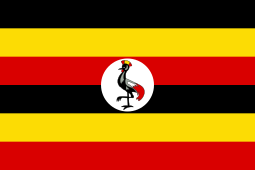In a
significant sign of trilateral cooperation, the first consignment of wheat from
India to Afghanistan, that was flagged off by External Affairs Minister Sushma
Swaraj and her Afghan counterpart Salahuddin Rabbani on October 29, reached the
Afghan city of Zaranj near the Iran-Afghanistan border on November 11, via the
Iranian port of Chabahar, thereby bypassing Pakistan.
In August
2017, Indian Union Minister of Ports, Nitin Gadkari had informed at an event in
Iran that the civil work at Chabahar port developed by India is complete, and
the Indian government is ordering INR 400 crores (USD63 million) worth of
mechanised equipment and cranes, and the port will be operational in 2018 to
export Indian wheat to Afghanistan. after meeting with Iranian President Hasan
Rouhani, he said "now, we are building a railway line in Iran. From
Chabhar, we can go to Afghanistan, Uzbekistan and Russia."
India's
Chabahar Port deal is seen as a counter to the China-Pakistan Economic
Corridor, as it has broken through the strategic encirclement by China and
Pakistan. It has played its cards right gaining
access to iron from Afghanistan's Hajigak mine and other natural resources from
the Central Asian countries. In the long run, the pipeline-to-road-to-rail-to-sea-to-road
shipment costs through Chabahar should be circumvented by direct transit
through Pakistan. Pakistan has been reluctant to provide such access and with
the CPEC in place it never will. The US also sees the Indian presence in
greater Central Asia beneficial for spreading the soft power of democratic and
friendly regimes. India hopes to see the Western countries use the Chabahar
route to link to Afghanistan and reduce their dependence on Pakistan.
India’s
engagement with the region must be holistic in its nature and character. It
should not be just about energy, oil and natural resources but about cooperating
in every sphere. Chabahar deal is an extremely important strategic decision &
India has pledged 500 million $ investment to gain access to the region’s
resources bypassing the land route via hostile Pakistan. However, India has to
be diplomatically proactive since, chronic instability in Afghanistan may limit
usefulness of Chabahar as a conduit to Afghanistan and Central Asia. Road
networks between Chabahar and Afghanistan rely upon connections to the Afghan
Ring Road. Insurgent activity by Afghanistan's Taliban militant group force
closure of the Ring Road between Kandahar and Helmand Province at will.
Chabahar port, is also the stage for insurgent activity by the insurgent group
Jundallah, which claims to be fighting for the rights of Sunni Muslims, and the
local ethnic Baloch. While China could force Pakistan to deploy nearly two
division of the Army to protect the CPEC, India does not have that luxury.
India just has to rely on strategy of making friends with the enemy’s enemy. But
with the present world opinion of Iran's
criminal support of terrorism; has India invested rightly is the question ?

















